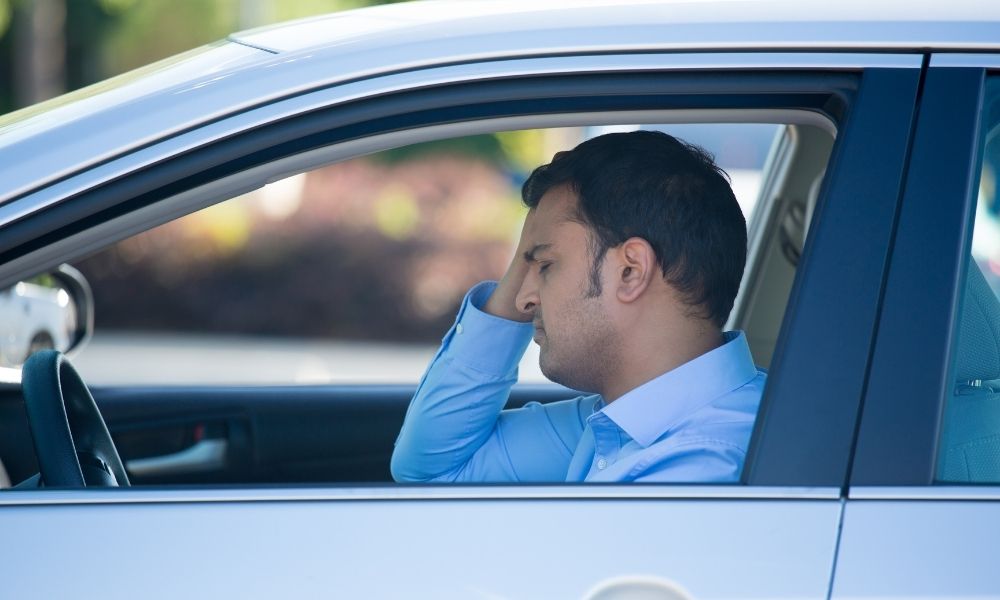There’s a big difference between application and theory — and driving is no different.
Even if you passed the written test with flying colors, it doesn’t automatically mean you’ll ace your driving test, too.
In fact, according to Jerry Insurance, 50% of people fail their driving test on the first try.
But wait!
You don’t have to be part of that 50%.
You can pass the driving test on your first try – you just have to be prepared for it.
This is where we come in.
We’re going to give you useful driving test tips, as well as common driving test mistakes. This way, you’ll know the dos and don’ts.
And when you’re familiar with those, it will help boost your readiness and confidence levels.
So shall we begin?
Common Driving Test Mistakes

There’s no one reason why someone fails their driving test — everyone’s situation is different.
That said, there are 4 mistakes that are usually the cause of failing the test. Let’s take a look at these mistakes.
Lack of Practice
Acing the concepts involved in driving is different from being behind the wheel.
Remember that driving is, in large part, a physical skill. So the more you practice, the more familiar you’ll be with various maneuvers.
Most states require behind-the-wheel instruction. But here, you’ll spend most of your time absorbing directions your instructor gives. So although these hours are crucial, they might not be enough.
Once you get your permit, you can already operate a car, albeit with restrictions. Use this as an opportunity to get in some practice time. And, since you need a license-carrying adult with you, it’s also an excellent opportunity to get advice and feedback.
Doing a Dangerous Maneuver
You’re not there to impress the examiner with your cool moves.
You’re there to prove that you’re a safe driver that knows what you’re doing.
Improper and dangerous lane switching and not checking for oncoming traffic before a merge are dangerous maneuvers – not a cool skill that you can do.
YoGov says a third of all test-takers fail their driving test because the examiner observed them doing something dangerous.
Committing Moving Violations
Examiners typically have a lengthy checklist of things to observe, and they record each infraction you commit. Sometimes, small things add up to the point that it costs you a pass.
Most of these are moving violations that may seem insignificant compared to dangerous action. However, minor mistakes that added up caused almost 20% of failures.
To break it down further, consider the following figures:
- 11% of aspiring drivers fail because they disobeyed a traffic sign. It’s nothing as blatant as running a red light. It often involves a complete stop at a yield sign or rolling through a stop sign.
- 7% fail because they drove too fast or too slow. For student drivers, the latter is more common.
Dealing with Psychological Stress
Sometimes, it’s not about knowledge or ability.
Anxiety is also a contributor to less pleasant driving test experiences.
It’s normal to feel stressed when you’re about to undergo the driving exam, and that’s not entirely a bad thing. We all know that some stress allows us to perform at an optimum level.
However, when there’s too much stress (and if we’re unable to manage it), it typically leads to more negative outcomes.
For this, try to figure out the deeper reason for your anxiety.
If it’s self-defeating beliefs or a lack of confidence, you can try to counter it by asking yourself some questions each time a thought pops into your head. Here are some examples:
| Self-Defeating Belief | Questions for Self-Reflection |
| I’m so nervous about my test. | What is it about the test that makes you anxious? When did the feeling start? |
| Passing the test is hard. | What gave you this idea? Who do you know has a different perspective? |
| I don’t do well on tests. | What stops you from being good at it? |
Reframing can work if you’re anxious about your examiner’s presence. Instead of seeing him as someone waiting for you to make mistakes, look at him as someone who can give you feedback about your driving skills.
Helpful Tips to Pass Your Driving Test with Flying Colors
Now you know what mistakes to avoid, let’s look at the driving test tips to keep in mind.
Be familiar with your car
You can choose to use your own car for your driving test — but ensure it meets the DMV’s standards.
Use it to your advantage — since you’ll have access to the vehicle, take the time to understand its controls. Fiddling around on your actual driving test will not inspire confidence.
Put in practice hours
Yes, yes, we know. This is a very basic tip.
But it’s what can GUARANTEE you a pass on your driving test.
So get behind the wheel, even if it’s just for half an hour each day. The more familiar the act of driving is, the more comfortable you’ll be during the driving test.
Try driving in different areas, too. You’ll need to demonstrate how to turn corners, switch lanes, and park, so you might as well be familiar with the necessary maneuvers involved in those.
Consider the weather
You’ll never know what the weather will be like on the actual day of your test. If you have a chance to take your car out in different conditions, take it. Just make sure someone’s supervising you when you do so.
Arrive early
There’s nothing wrong with getting there on time. However, giving yourself extra time allows you to prepare yourself mentally. You’ll get the chance to calm down if you’re a bundle of nerves.
Use your safety accessories
Your driving test begins before you even start the car. Adjust your seat, fix your side and rearview mirrors, and fasten your seatbelt.
The examiner takes the front passenger seat. You can start the car once he buckles up.
Don’t forget about the basics
Accelerate and brake gently. Don’t slam into your gas or brake pedal. Ensure you’re comfortable demonstrating the following:
- Three-point turns — Don’t do it unless you know you can complete it. Make sure the road is clear before you begin. Also, signal before you complete each turn.
- Complete stops — rolling through a stop sign may earn you deductions. You should stay put for 2 to 3 seconds before moving again.
- Reversing — the examiner may ask you to turn off your head unit or cover it with a clipboard, which means you can’t use your rear camera. Check your surroundings before you back up your car.
Cover your blind spots
You must be aware of what’s going on around you. Utilize your mirrors and look over your shoulder if you have to, especially when switching lanes, preparing to turn, or leaving a parking space.
Be prepared to parallel park
Some states don’t include parallel parking in their driving tests, but others do. Whatever the case, it’s still better if you know how to do it. You’ll never know when a situation will arise when you’ll need to use it.
Don’t focus all your attention on your examiner
Keep your eyes on the road. Most students become distracted, especially when they notice the examiner making notes. The more you stress about what the examiner’s writing down, the more likely you’ll miss out on something on the road.
Watch out for pedestrians
Don’t rush through a pedestrian crossing, even if no one’s there. The safe way to handle this scenario is to slow down before reaching it.
Remember, the safety of pedestrians is a priority.
The Wrap Up
Many things can go wrong in a driving test — but many things can also go right.
Don’t doubt yourself so much, especially if you know you’ve prepared for it the best you can.
As long as you follow these driving test tips, and avoid the common mistakes, you should be fine.
And, if you make mistakes, don’t automatically assume they’re critical. Complete the test with composure.
Good luck!
